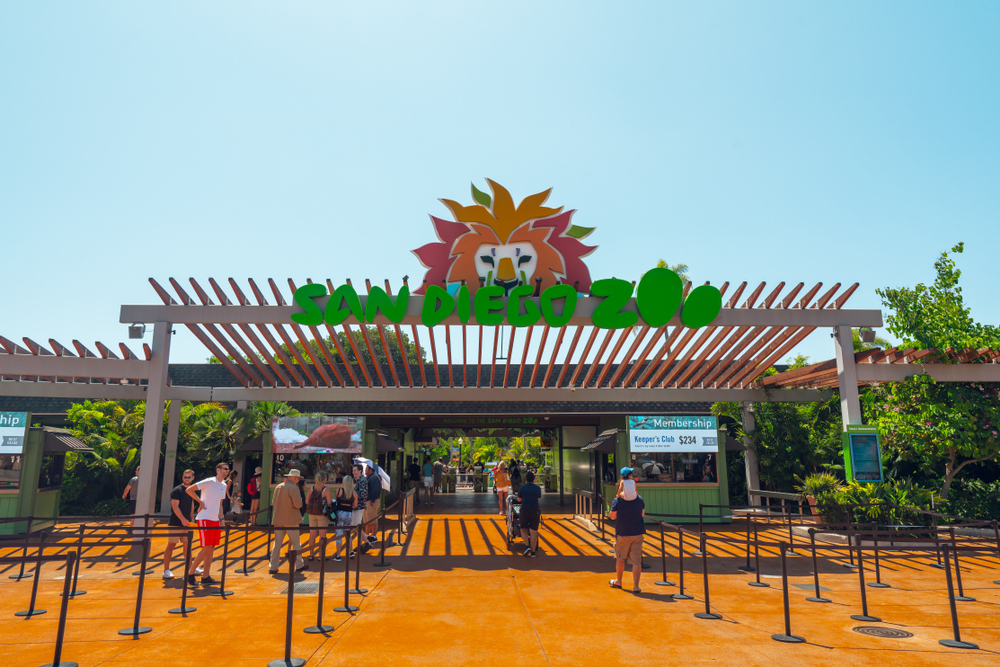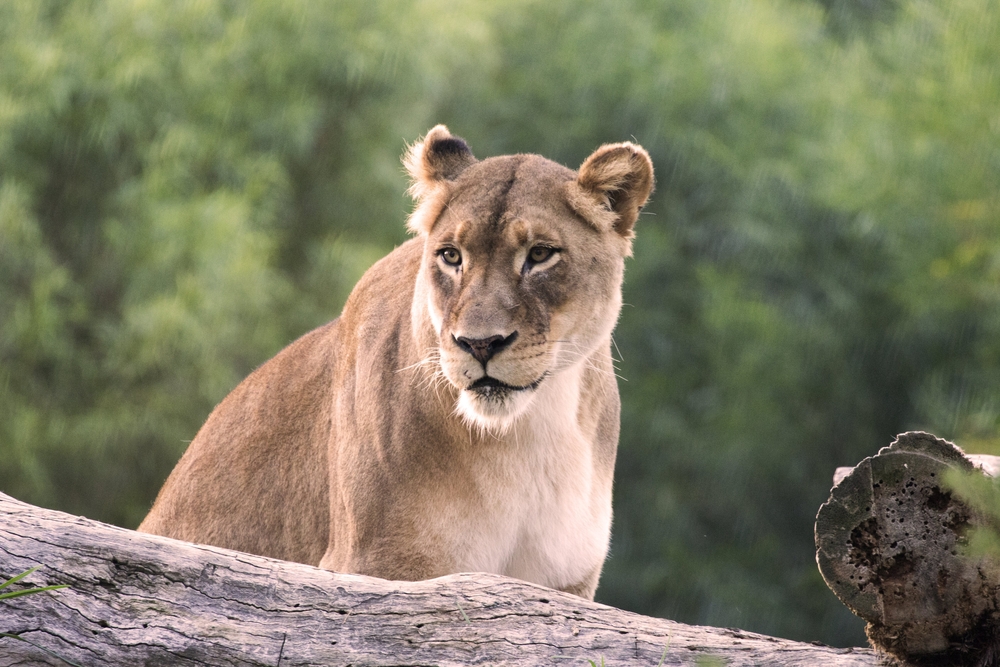More than 4,000 animals await your arrival at the San Diego Zoo and Safari Park, so plan on having a wild day.
There are a total of 480 distinct species included in this total. Visiting an AZA-affiliated institution means you can rest assured that the animals will be kept in conditions that are as humane as possible.
However, are pets allowed in the parks?
It is not permissible to bring your pet, emotional support, or comfort animal to the Zoo or Safari Park.
For this reason, we classify both the Zoo and Safari Park as quarantine facilities. These establishments are subject to state and federal rules that prohibit the presence of pets, comfort animals, or emotional support animals with guests.
Both parks do not provide kennel services. Their website does suggest kennels within the surrounding area that will happily accommodate your pets while you tour the parks.
Table of Contents
In what seasons are the San Diego Zoo and Safari Park Open?

Every day of the year, rain or shine, including all holidays, the San Diego Zoo and Safari Park are open to the public!
Despite their best efforts, some habitats, tours, restaurants, transportation, entertainment, and services may be closed or reopened without warning or liability due to refurbishment, capacity, weather, or other special events which are beyond their control.
There is a daily list of modifications and closures at both parks’ major entrances. You should double-check this upon your arrival.
How much is parking at the Safari Park or Zoo?
Parking at the San Diego Zoo is free. It’s a privately-owned parking lot, and there’s a charge to use it.
No $100 banknotes are accepted; however, you can pay with a credit card or debit card. The nonprofit San Diego Zoo Wildlife Alliance relies on revenue from memberships, admission, food and gift shop sales, and Safari Park parking fees to support our mission of conservation and education.
There is no overnight parking allowed at either site unless you are a guest of a regularly planned sleepover activity.
There are no designated RV or bus parking places in the parking lot in front of the zoo. The parking lot of the Safari Park, on the other hand, is open during regular business hours and has designated spots.
The zoo’s parking lot has a total of five electric vehicle charging locations in its southeast section.
At Safari Park, there are two electric recharging points. Parking lot attendants at Safari Park will be able to provide you with directions.

For a low price, visitors can enjoy the parks’ amenities.
Is it possible to have my event at the Zoo or Safari Park?
If basic four walls and a ceiling won’t suffice for your next event, think outside the box.
With the Zoo and Safari Park’s realistic environment and professional special events staff, organizing a small gathering for 20 or a massive gala for 3,000 is a cinch.
You can count on their experienced event planners to help you create an occasion that will live long in the memory of your visitors.
San Diego Zoo’s events webpage can be used to inquire about availability and cost.
How can Visitors to the Zoo and Safari Park Recycle Their Waste?
Throughout our parks, aluminum cans and plastic bottles can be recycled in designated recycling bins.
The Zoo and Safari Parks, meanwhile, both provide cell phone recycling drop-off locations.
At the Zoo’s exit, there is a huge plexiglass drop box close to the re-entry hand stamp station.
At the Safari Park’s main entrance, there is a drop box immediately past the turnstiles.
Will the San Diego Zoo have pandas on display?

The loan of the giant pandas to the San Diego Zoo ended in April of this year. The pandas have returned to China as part of the loan deal.
After 25 years, they are proud of their accomplishments and eager to engage with their Chinese counterparts in the next chapter of panda conservation!
Can I view any platypus at the San Diego Zoo?
Yes! Having two platypuses housed at the Safari Park’s Walkabout Australia display is a privilege that the zoo takes very seriously.
At this time, there are only two other platypuses living outside of Australia.
Freshwater habitats are home to these unusual species, which are partially aquatic mammals that lay eggs.
In the same way that the zoo emphasizes the requirement for the conservation of freshwater for both animals and humans, their platypus ambassadors serve as conservation advocates for their species.
The most active time for platypuses is at night or in the early morning hours.
For those who have never had the opportunity to see a platypus up close, seeing one in their natural habitat or at the zoo is an unforgettable experience.
Which Zoo or Safari Park has information on which animals?
You can use the website’s search option to find your animal, or you can go to the San Diego Zoo Wildlife Alliance Animals & Plants website.

Despite their best efforts, some habitats, tours, restaurants, transportation, entertainment, and services may be closed or reopened without warning or liability.
That’s due to refurbishment, capacity, weather, or other special events which are beyond their control.
There is a daily list of modifications and closures at both parks’ major entrances. You should double-check this upon your arrival.
How can I interact closely with the animals at San Diego Zoo?
Zoo visitors can get up close and personal with rare and exotic animals with its Animals in Action and Inside Look Tours.
An enjoyable tactile experience can be had at Safari Park’s Petting Kraal. The Lorikeet Safari is another fun activity at the park where you can help feed the lorikeets!
This program lets you get up and personal with the Park’s wildlife ambassadors, including a cheetah, alligator, and serval, through hands-on encounters.
You can address questions regarding the species to wildlife care specialists in real-time.
Find out where and when interactions take place by checking your park map, which includes timings and places.
At both parks, their special experiences are meant to get you up close and personal with nature!
What is the best time to see animals in action at the San Diego Zoo?

No particular time of day is better for seeing more wildlife, though many of them are early risers and may be more active early in the morning than later in the day.
The zoo cares about the numerous endangered species it houses, so they’ve constructed habitats that look and feel like their natural surroundings.
These places are similar to natural habitats in that they provide the animals with plenty of room to hide.
Zoos have discovered that the ability to hide is critical to the well-being of a wide variety of animals.
Because of environmental conditions, health challenges, or behavioral issues, wildlife may be removed from public view.
In addition, many of their habitats are intended to allow animals to disappear from public view at any time.
For these reasons, it is not always possible to anticipate or notice certain deviations before the fact.
Do I get refunded if any facility at the Zoo is closed?
In the event of bad weather or habitat closure, no refunds or exchanges will be granted.
Despite their best efforts, some habitats, tours, restaurants, transportation, entertainment, and services may be closed or reopened without warning or liability.
It is the guests’ responsibility to check for these closures before they visit.

How do the Zoo and Safari Park adjust if there is bad weather?
Their facilities are open 24 hours a day, seven days a week, regardless of the weather!
However, certain animals (especially primates) may choose the off-view region based on the extent of the rain, whereas many creatures appear unaffected by rain.
Exhibit closures, poor weather, and high heat do not qualify for refunds or exchanges.
While the zoo makes every effort to ensure that guests have a wonderful time, from time to time, habitats, tours, restaurants, transportation, entertainment, or other services may be altered or discontinued without prior notice or liability due to maintenance, capacity, bad weather, or special occasions.

Can I tour the San Diego Zoo and Safari Park on the same day?
It’s possible, but it’s not advised. The distance between the Zoo and the Safari Park is about 30 miles.
It’s possible to spend all day at both parks, but visitors with limited time are advised to spend at least three to four hours in the Zoo and a maximum of six to eight hours in the Safari Park.
Drive time between the two parks is approximately 45 to an hour depending on traffic and other circumstances.
Planning a multi-day visit to our parks is the best way to see and enjoy as much as possible in an unrushed manner.
A multi-day ticket allows you to visit both parks at your leisure because each park requires a separate admission ticket.
Can I exit the Zoo and return on the same day?
Yes! Passengers who wish to re-enter on the same day should get the exit hand stamps and then proceed to the main turnstile with their tickets and hand stamps.

To re-enter, members must present their membership cards and photo ID.
Can the San Diego Zoo accommodate my allergies or dietary restrictions?
Even though the zoo recognizes the significance of food allergies, as a non-profit organization, they are unable to satisfy all of its guests’ requirements.
They don’t have the tools in their kitchens to cater to customers with food sensitivities.
In addition to the ingredients listed on their menu, restaurants cannot guarantee that other components are not present during the production of the food.
Guests are permitted to bring their food and beverages to the parks. On-site food storage, such as coolers, is prohibited and there are no facilities to keep food in.
Can I take food to the Safari or Zoo?
Yes! Small quantities of food for one person can be brought into our parks. Parties aren’t allowed on the premises because of the restrictions on food and drink containers, and there aren’t any facilities for storing food, either.

The zoo requests that you do not take straws, alcohol, or glass containers into the parks for the safety of the visitors and the animals in their care.

















